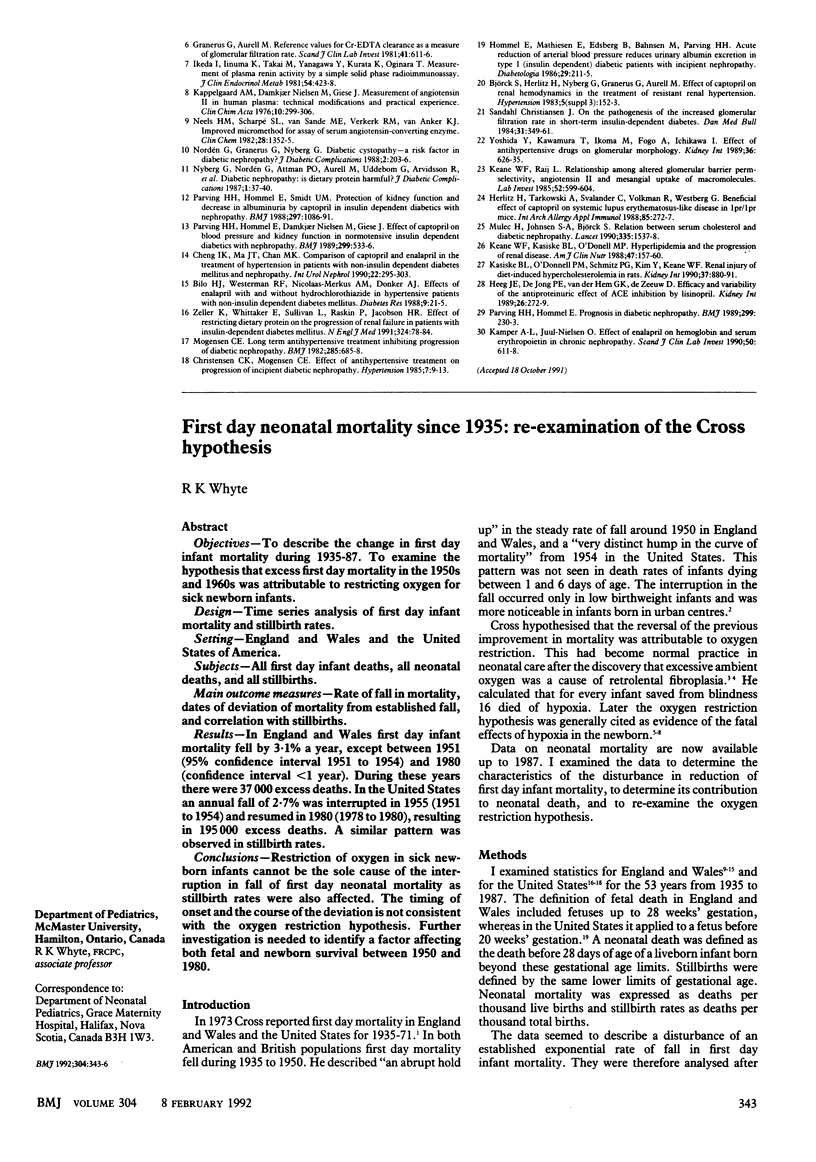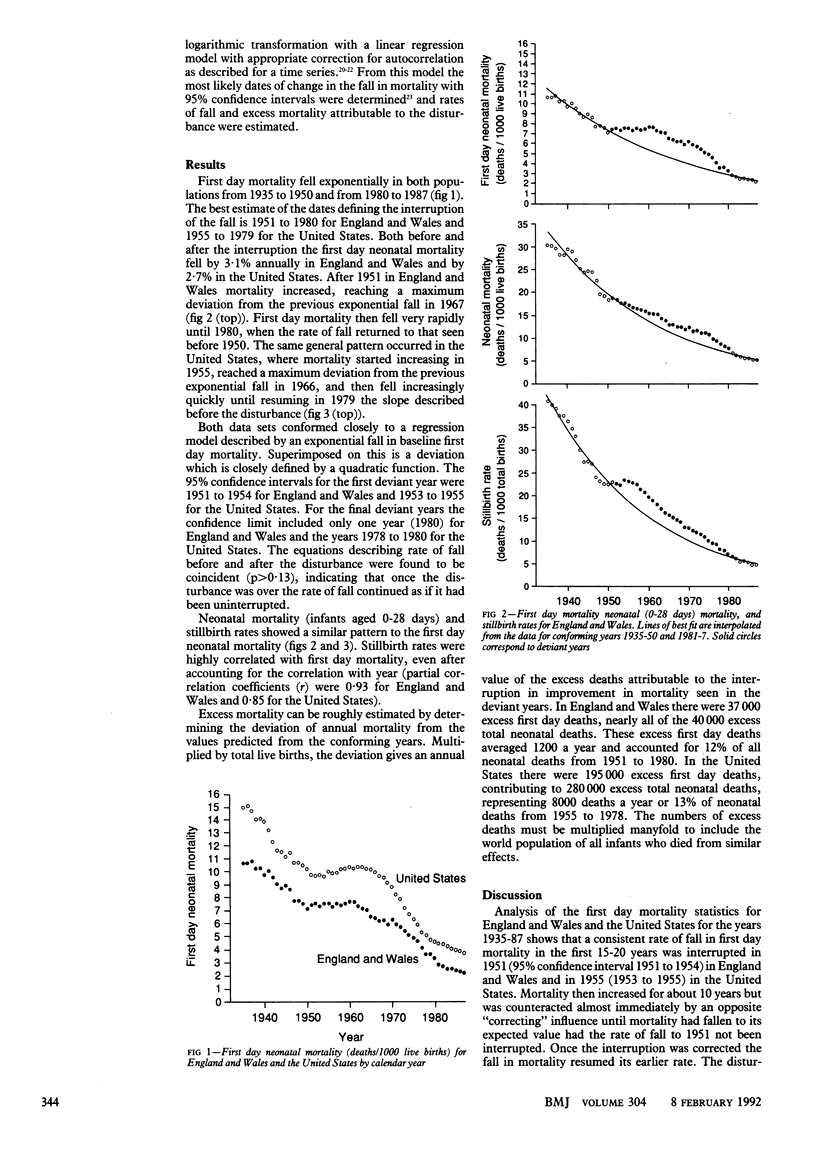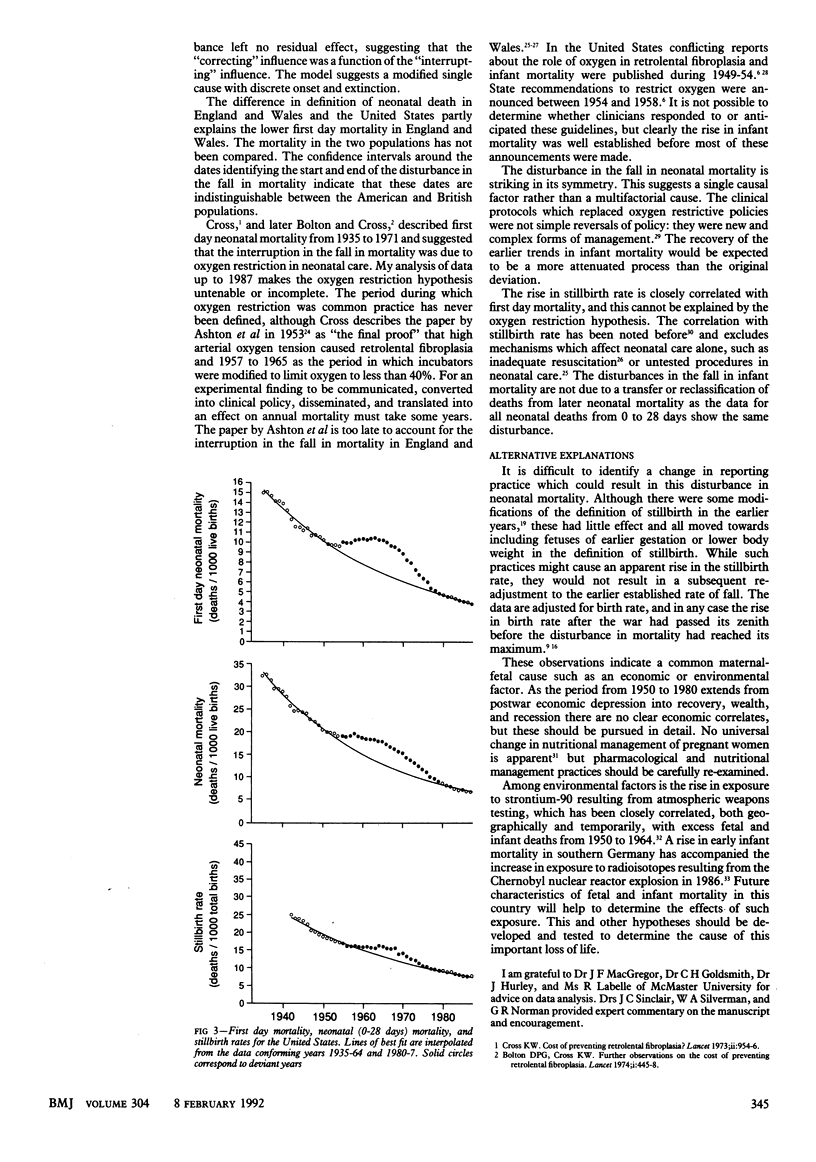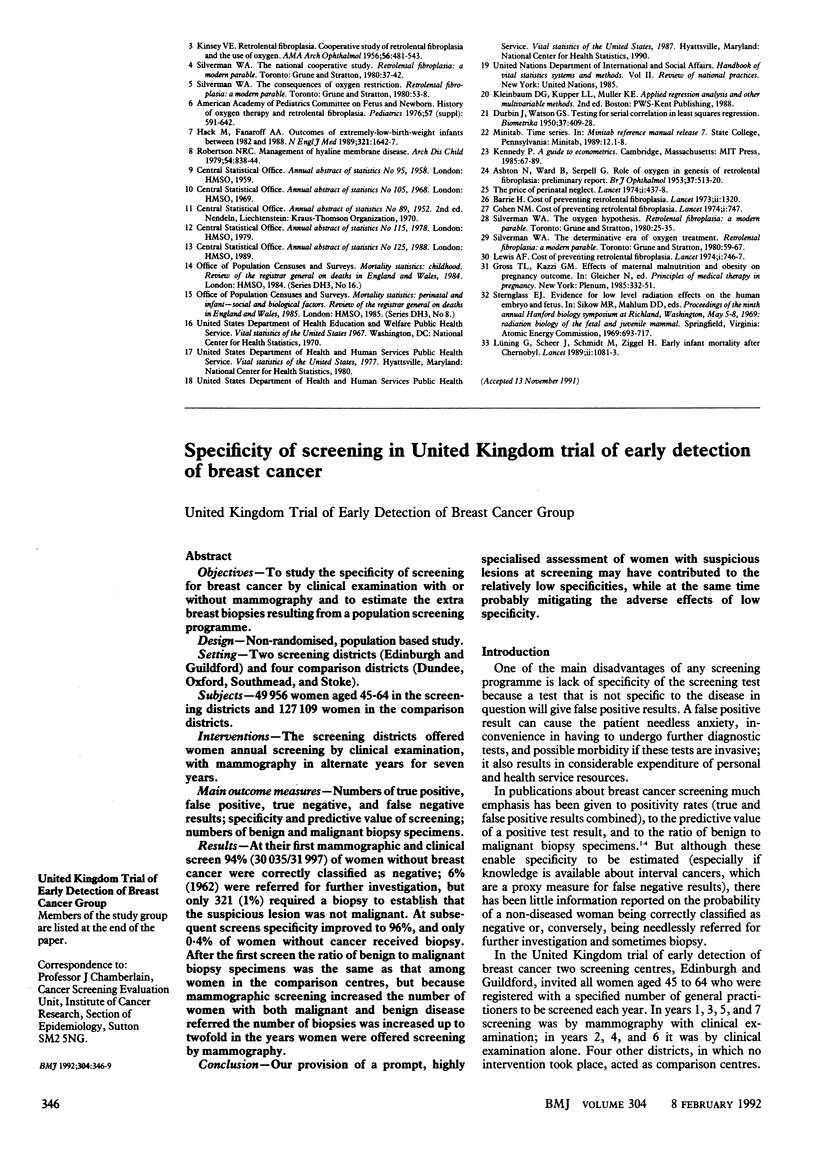Abstract
OBJECTIVES--To describe the change in first day infant mortality during 1935-87. To examine the hypothesis that excess first day mortality in the 1950s and 1960s was attributable to restricting oxygen for sick newborn infants. DESIGN--Time series analysis of first day infant mortality and stillbirth rates. SETTING--England and Wales and the United States of America. SUBJECTS--All first day infant deaths, all neonatal deaths, and all stillbirths. MAIN OUTCOME MEASURES--Rate of fall in mortality, dates of deviation of mortality from established fall, and correlation with stillbirths. RESULTS--In England and Wales first day infant mortality fell by 3.1% a year, except between 1951 (95% confidence interval 1951 to 1954) and 1980 (confidence interval less than 1 year). During these years there were 37,000 excess deaths. In the United States an annual fall of 2.7% was interrupted in 1955 (1951 to 1954) and resumed in 1980 (1978 to 1980), resulting in 195,000 excess deaths. A similar pattern was observed in stillbirth rates. CONCLUSIONS--Restriction of oxygen in sick newborn infants cannot be the sole cause of the interruption in fall of first day neonatal mortality as stillbirth rates were also affected. The timing of onset and the course of the deviation is not consistent with the oxygen restriction hypothesis. Further investigation is needed to identify a factor affecting both fetal and newborn survival between 1950 and 1980.
Full text
PDF



Selected References
These references are in PubMed. This may not be the complete list of references from this article.
- ASHTON N., WARD B., SERPELL G. Role of oxygen in the genesis of retrolental fibroplasia; a preliminary report. Br J Ophthalmol. 1953 Sep;37(9):513–520. doi: 10.1136/bjo.37.9.513. [DOI] [PMC free article] [PubMed] [Google Scholar]
- Barrie H. Letter to the editor: Cost of preventing retrolental fibroplasia. Lancet. 1973 Dec 8;2(7841):1320–1320. doi: 10.1016/s0140-6736(73)92888-2. [DOI] [PubMed] [Google Scholar]
- Bolton D. P., Cross K. W. Further observations on cost of preventing retrolental fibroplasia. Lancet. 1974 Mar 16;1(7855):445–448. doi: 10.1016/s0140-6736(74)92395-2. [DOI] [PubMed] [Google Scholar]
- Cross K. W. Cost of preventing retrolental fibroplasia? Lancet. 1973 Oct 27;2(7835):954–956. doi: 10.1016/s0140-6736(73)92610-x. [DOI] [PubMed] [Google Scholar]
- DURBIN J., WATSON G. S. Testing for serial correlation in least squares regression. I. Biometrika. 1950 Dec;37(3-4):409–428. [PubMed] [Google Scholar]
- Hack M., Fanaroff A. A. Outcomes of extremely-low-birth-weight infants between 1982 and 1988. N Engl J Med. 1989 Dec 14;321(24):1642–1647. doi: 10.1056/NEJM198912143212405. [DOI] [PubMed] [Google Scholar]
- KINSEY V. E. Retrolental fibroplasia; cooperative study of retrolental fibroplasia and the use of oxygen. AMA Arch Ophthalmol. 1956 Oct;56(4):481–543. [PubMed] [Google Scholar]
- Lüning G., Scheer J., Schmidt M., Ziggel H. Early infant mortality in West Germany before and after Chernobyl. Lancet. 1989 Nov 4;2(8671):1081–1083. doi: 10.1016/s0140-6736(89)91091-x. [DOI] [PubMed] [Google Scholar]
- Roberton N. R. Management of hyaline membrane disease. Arch Dis Child. 1979 Nov;54(11):838–844. doi: 10.1136/adc.54.11.838. [DOI] [PMC free article] [PubMed] [Google Scholar]


